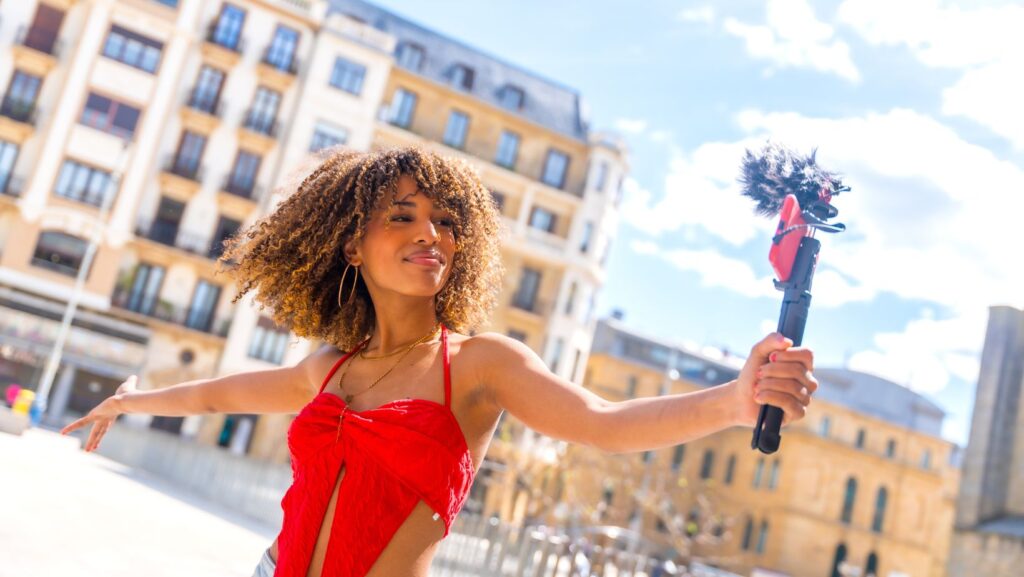Travel creators aren’t just sharing pretty pictures anymore.
They’re building real businesses by posting smart content from wherever they are. Whether it’s a hidden beach in Croatia or a street food stall in Bangkok, creators are using social media to connect with global audiences. And they’re not doing it by luck.
Behind the scenes, there’s strategy, planning, and a good understanding of what works on each platform. The days of posting and hoping are gone.
If a travel creator wants to grow, they need to treat their content like a brand. Here’s how the best ones are doing it.
Why Social Media Matters More Than Ever
Search engines still matter, but social media moves faster. A good Reel or TikTok can go viral in a few hours and put a travel blogger on the map. This kind of attention brings more than just likes—it brings new followers, partnerships, and traffic to other channels.
Platforms like Instagram, YouTube Shorts, and TikTok act as discovery engines. They reward entertaining, useful, or inspiring content with reach. For travel creators, this means one strong post can get them seen by thousands or even millions of people around the world.
Social media is also where most travelers spend their time. People often scroll through Instagram for destination ideas or watch YouTube to plan their next trip. That means travel creators have a huge chance to grab attention.
It’s not just about stunning visuals anymore. It’s about storytelling, angles, and value. The more helpful or unique the content is, the more likely it is to get shared. A single post with the right hook can change everything. That’s why travel creators are doubling down on these platforms.
Picking the Right Platform (and Focusing Hard)
Not every platform will work the same way for every creator. Some travel bloggers get the most traction on Instagram. Others grow faster on TikTok. YouTube Shorts is getting stronger too. But the biggest mistake is trying to grow on all of them at once. It spreads creators too thin. The smart move is to pick one or two platforms and go all in.
Instagram works well for those who want a balance of photos, short videos, and DMs. It’s especially good for storytelling through Reels or multi-slide carousels. TikTok is more raw and fast-moving. It rewards quick tips, humor, or unexpected travel moments. The tone is different, but the reach can be massive. YouTube Shorts offers more SEO value over time, and Pinterest is quietly great for blog traffic.
What matters most is matching the content style to the platform. A slow-paced vlog won’t do well on TikTok, but it might work on YouTube. A great photo can still win on Instagram, especially if it’s tied to a strong caption or travel tip. The key is consistency—posting regularly and improving with every post.
Building a Profile That Converts
Having good content isn’t enough if the profile doesn’t explain who the creator is or what they offer. A solid bio is one of the easiest wins in social media growth.
It should tell people what kind of traveler the person is—budget, luxury, solo, couple, van life, etc. It should also include a clear location or focus area. That makes it easier for people to decide if they want to follow.
A good profile also needs a link in bio. It can point to a travel blog, YouTube channel, newsletter, or even a travel gear shop. Tools like Linktree or Beacons can help bundle multiple links. But one clear CTA is always better than five vague ones. The profile photo should be clean, and the feed should make sense at a glance.
If someone lands on a page and doesn’t understand what it’s about, they’ll scroll away. Travel creators who want to grow need to make that first impression count. The best profiles feel like a brand, not a personal diary. They invite people in and give them a reason to stick around.

Creating Content That Actually Grows a Global Audience
Not all travel content is the same. Some creators only post selfies or location tags. That might work for a while, but it rarely builds a long-term audience.
What works better is content that teaches, entertains, or inspires. A Reel showing “3 Things You Didn’t Know About Tbilisi” will always perform better than a generic beach clip. Specific beats vague every time.
One strategy that’s gaining traction is mixing location content with personal storytelling. Instead of just showing where they went, creators explain why they went there, what they learned, and what surprised them. This creates an emotional connection. People follow creators who feel real and helpful.
Using location-based hashtags still works—especially for Instagram. Adding captions that include keywords like “best food in Hanoi” or “hidden gems in Peru” also helps with discovery. Tools like CapCut or InShot can level up video edits without needing a laptop. Travel creators who want to stand out should focus on quality, clarity, and connection—not just aesthetics.
Some creators also mention services like how to buy Instagram followers, but this only works if the content is strong. Buying followers without engagement leads to dead accounts. The smart way is to post consistently, create save-worthy content, and respond to comments and DMs. That’s what drives true growth.
Growing Through Consistency and Momentum
One of the hardest parts of growing as a travel creator is staying consistent. Travel itself is unpredictable. There are time zones, bad Wi-Fi, and exhaustion. But the creators who grow are the ones who show up anyway. That doesn’t mean daily posting, but it does mean having a plan.
Most successful travel bloggers plan content in batches. They shoot multiple videos or take lots of photos in one location, then spread it out. Tools like Later, Buffer, or Metricool can help schedule posts in advance. This way, even while offline, the content keeps flowing.
Consistency also builds trust. If a new follower sees that someone posts regularly, they’re more likely to stay. It signals that this creator is serious, not a one-off tourist. Over time, that trust leads to better engagement, more shares, and more platform push.
Using Engagement and Brand Building to Fuel Growth
Engagement is the secret weapon of travel creators. Replying to comments, answering DMs, and using interactive features like polls or Q&A builds loyalty. The more people engage, the more platforms push the content to new users. Stories are especially useful for this. Creators can use them to share behind-the-scenes moments or ask for feedback on where to go next.
Brand partnerships often start in the DMs too. A tourism board or product brand might reach out after seeing consistent content. That’s why keeping the tone friendly and professional in replies makes a difference.
At the same time, understanding how audiences interact with content is crucial for long-term brand growth. Tools like Usercentrics’ cookieless tracking solution enable creators and marketers to gain valuable insights into audience behavior without relying on traditional cookies, helping them refine their marketing strategies and maintain compliance with evolving data regulations.
Collaborating with other travel creators is another smart move. It brings exposure to new audiences and adds variety. Even simple story shoutouts or co-hosted Reels can boost numbers on both sides.

Final Thoughts
Travel creators who grow global audiences aren’t just lucky. They plan, test, and show up consistently. They pick the right platforms, build profiles that convert, and post content that connects. They don’t chase trends blindly—they mix what works with what feels true to their
voice. Social media isn’t magic. But for travel bloggers who treat it like a craft, it can take them much further than a passport ever will.



